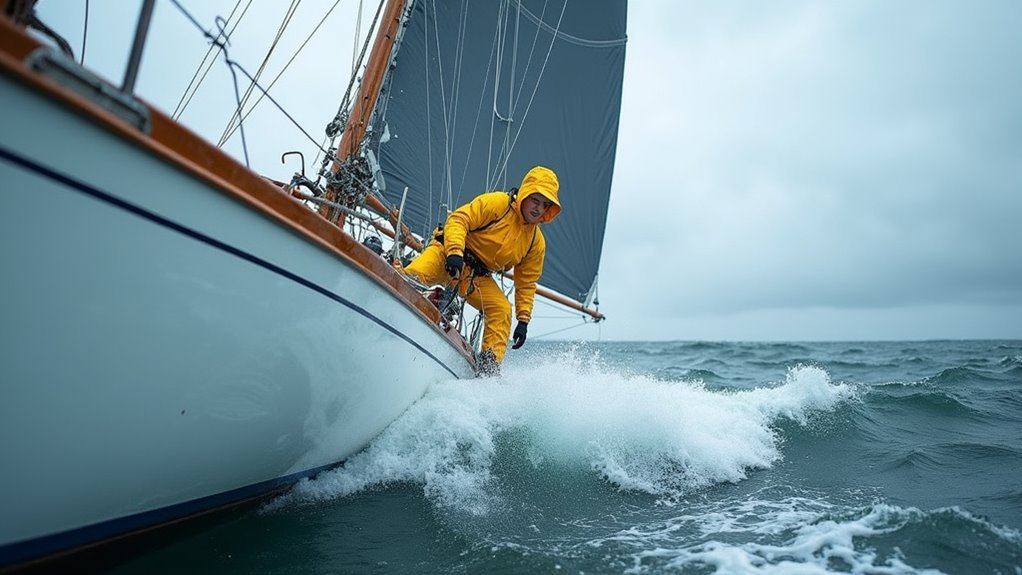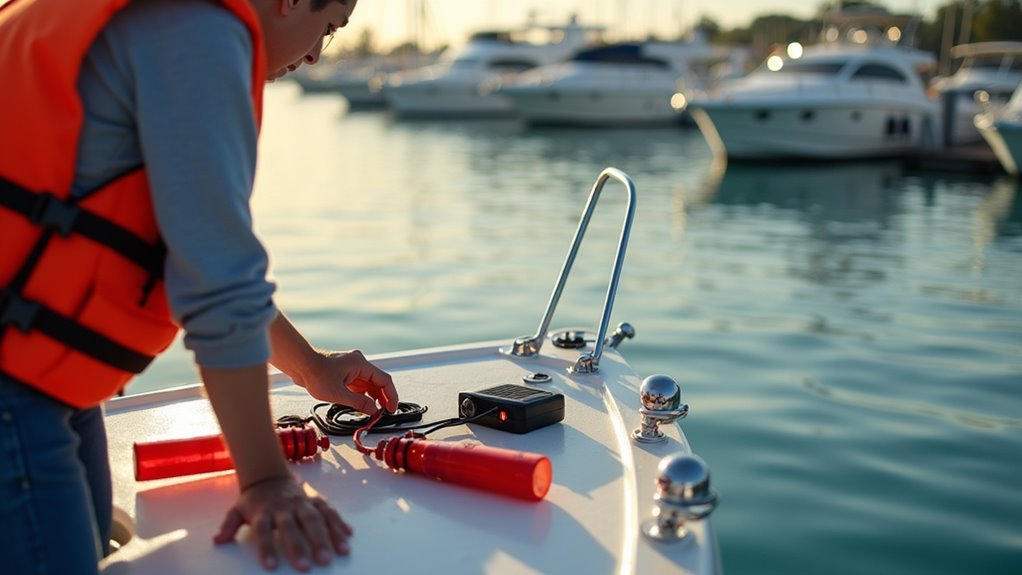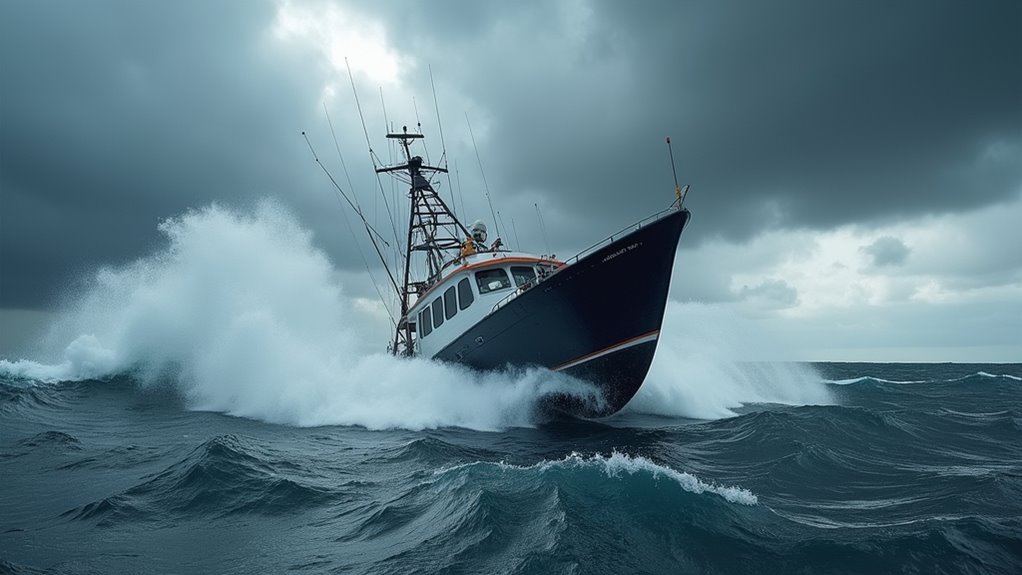Physical Address
304 North Cardinal St.
Dorchester Center, MA 02124
Physical Address
304 North Cardinal St.
Dorchester Center, MA 02124

How can you prevent your boat from capsizing when unexpected conditions threaten to turn your peaceful day into a dangerous emergency?
You’ve probably felt that unsettling moment when your boat suddenly rocks more than expected, making your stomach drop as you wonder if you’re losing control. Capsizing isn’t just something that happens to inexperienced boaters—even seasoned captains can find themselves in dangerous situations when they overlook critical safety fundamentals. The difference between a close call and a disaster often comes down to understanding a few essential principles that’ll keep you and your passengers safe on the water.

Before you even untie from the dock, you need to know exactly how much weight your boat can safely handle and where that weight should sit. Check your boat’s capacity plate – it’s usually near the helm and shows maximum weight and passenger limits. Don’t just count people; include gear, fuel, coolers, and equipment in your calculations.
Weight distribution matters just as much as total weight. Keep heavy items low and centered in the boat. Distribute passengers evenly from bow to stern and port to starboard. If someone moves to one side, have others shift to maintain balance. Avoid loading all your gear in the bow or stern, which creates dangerous trim issues.
When in doubt, err on the side of caution and leave non-essential items behind. If you’re planning activities like river rafting with children, proper weight distribution becomes even more critical for maintaining stability throughout your adventure.
While many boaters think speed control is simply about following posted limits, true mastery means reading water conditions and adjusting your throttle accordingly. Your boat’s stability depends on matching your speed to what the water’s throwing at you.
Consider these critical speed adjustments that could save your life:
Just as mountaineers must adjust their pace when navigating treacherous glacier climbing terrain, boaters need to respect the power of changing conditions and modify their approach accordingly.

Even experienced boaters can find themselves caught off-guard by rapidly changing weather, but you’ll dramatically improve your safety by learning to spot nature’s early warning signals. Watch for darkening clouds on the horizon, especially towering cumulonimbus formations that signal thunderstorms.
Pay attention to sudden wind shifts or dead calm periods—both indicate approaching severe weather.
Monitor your barometer; rapidly dropping pressure means storms are coming fast.
Notice how birds behave—they’ll fly low or seek shelter before conditions worsen.
Feel for temperature drops and increasing humidity, which often precede dangerous weather fronts.
Check marine weather forecasts before departing, but don’t rely solely on them. Trust your observations and head for shore immediately when you spot these warning signs.
It’s always better to cut your trip short than risk capsizing. Just as hikers need a well-stocked hiking bag with essential items for safety, boaters should ensure they have emergency supplies aboard in case weather conditions deteriorate unexpectedly.
Your boat’s stability depends heavily on where you place weight, and smart distribution can mean the difference between staying upright and taking an unplanned swim.
Keep heavy items low and centered in your vessel. Store equipment, fuel, and supplies in the boat’s bottom compartments rather than on deck or in high storage areas. When passengers move around, they should stay low and avoid sudden weight shifts.
Strategic weight placement principles:
Smart weight management keeps your center of gravity low and your boat stable. These same principles apply to other water activities where maintaining balance is crucial, such as following whitewater rafting safety guidelines to prevent capsizing in rapids.

Before you untie those dock lines, a thorough safety inspection can prevent emergencies that lead to capsizing situations. Check your bilge pump’s operation and clear any debris from the intake. Verify that all drain plugs are secure and properly sealed. Test your radio and navigation lights to ensure communication and visibility during emergencies.
A thorough pre-departure safety inspection can prevent capsizing emergencies before you even leave the dock.
Inspect life jackets for tears, broken buckles, and proper fit for each passenger. Confirm you’ve got the required number aboard. Check that fire extinguishers are charged and accessible. Examine your anchor and rode for wear or damage.
Don’t forget weather updates and marine forecasts. Strong winds and rough seas considerably increase capsizing risks. If you’re planning to boat during hot weather, prepare appropriate sun protection and extra water to prevent heat-related emergencies that could impair your judgment on the water.
Finally, inform someone onshore about your departure time, destination, and expected return. This pre-departure routine takes fifteen minutes but could save lives.
Once you’ve completed your safety checks and encounter challenging conditions on the water, knowing how to handle your boat in rough seas becomes your lifeline. Your survival depends on making smart decisions when waves tower above you and winds howl around your vessel.
Here’s what’ll keep you upright when conditions turn dangerous:
Don’t let pride override common sense when Mother Nature flexes her muscles. Like experienced camping tips that can save your life in the wilderness, these boating fundamentals will serve you well when the seas get rough.

When weather conditions shift without warning, your ability to react quickly and decisively can mean the difference between safely reaching shore and finding yourself in a life-threatening situation.
First, monitor your marine radio constantly for weather updates and storm warnings. If conditions deteriorate rapidly, immediately secure all loose equipment and move passengers to the boat’s center.
Reduce speed dramatically to maintain better control, and head toward the nearest safe harbor at an angle to the waves.
If capsizing becomes imminent, ensure everyone’s wearing life jackets and prepare emergency equipment for quick access. Stay calm and communicate clearly with your crew about your next moves.
Remember that panic creates mistakes – your steady leadership keeps everyone focused on survival rather than fear.
Just as church camp experiences teach us to stay composed and support one another during challenging moments, maintaining that same sense of community and calm leadership on the water can be crucial for everyone’s safety.
Your boat’s stability depends heavily on consistent maintenance that keeps critical systems functioning at peak performance. When you neglect routine upkeep, you’re essentially gambling with your family’s safety on the water. Critical components can fail without warning, leaving you vulnerable to capsizing.
Essential maintenance tasks that protect your stability include:
Schedule monthly inspections and address issues immediately. Your proactive approach prevents catastrophic failures that lead to capsizing emergencies. Just as adventure seekers prepare thoroughly for camping expeditions, boaters must embrace the same meticulous planning mindset to ensure safe voyages.
You’ve got the knowledge—now it’s time to put it into practice. Remember, an ounce of prevention is worth a pound of cure when you’re out on the water. Don’t skip those pre-departure checks, keep your weight balanced, and always respect the weather conditions. Your boat’s stability depends on these fundamentals, and so does your safety. Stay vigilant, maintain your vessel regularly, and you’ll enjoy countless worry-free days on the water.